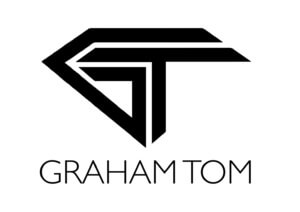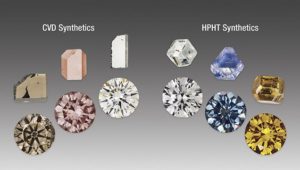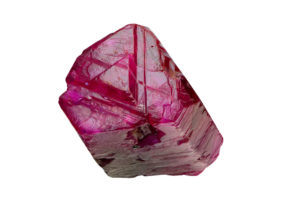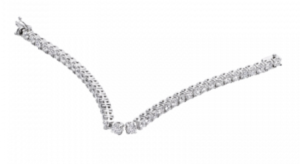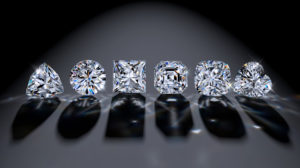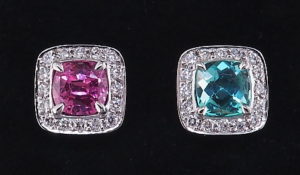If you are thinking of going away this Christmas for some sun, fun and retail therapy especially for diamonds and gemstone jewellery, spare a few minutes and read my article on the various treatments on the big four gems, diamond, ruby, emerald and sapphire. I have only written a brief synopsis on each treatment, but for further information, please contact me.
Enhancement of gemstones with varying treatments have existed for centuries. In addition to enhancing their appearance , the process may also improve or lessen the gemstone’s durability. The treatments are not always apparent and are sometimes difficult to distinguish and any party selling an enhanced gemstone in UK according to CIBJO guidelines must disclose the treatment method and must be mentioned on supportive paperwork.
The image above shows Diamond clarity enhancement –Fracture filling: before (left) and after (right).
Enhancement primarily improves colour and clarity of gemstone but at same time recent demand for unheated sapphires and rubies have caused a price increase of as much as 50%-100% for unheated material. In most cases heating enhances the gemstone to make it more attractive for a buyer. Some treatments are not permanent and laboratories will not issue a report if treatment is not permanent.
Diamond
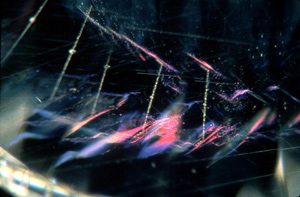
Pink/bluish/purple flashes under magnification
- Surface coating – Applying a thin film of synthetic diamond to the surface of a diamond simulant, giving it certain characteristics of a real diamond. This method is not permanent.
- Laser drilling – A method of removing significant inclusions by lasering into diamond and burning away inclusion.
- Fracture filling – After lasering diamond and removing inclusion, a glass compound with same refractive index of diamond is injected to make inclusion less apparent. This method is not permanent and controversial.
- Irradiation & Annealing – Neutron and electron bombardment of diamond creating colour centres and with additional heating creates an assortment of coloured diamond.
- HPHT – High pressure high temperature treatment removes colour or adds colour dependent on diamond type.
Ruby

Bluish flashes/flattened and rounded gas bubbles
- Heating – A method of exposing gem to varying high temperatures for the purpose of altering colour and improving clarity.
- Lattice Diffusion – The use of element Beryllium during heat treatment to penetrate the crystal lattice of Ruby to improve colour.
- Glass filling – This method represents ruby that is heavily treated to improve transparency and is very controversial as treatment is unstable resulting in damaged stones.
Emeralds
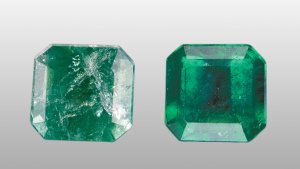
Yellow orange flashes/trapped air bubbles
- Fracture filling – This method employs artificial resins such as polymer to hide fractures with disastrous results if placed in ultrasonic cleaning equipment.
- Oiling – This method is accepted in trade with use of essential oils to hide fractures within gemstone.
Sapphire

Discoid fracture in stone/zoning of colour
- Heating – A method of exposing gem to varying high temperatures for the purpose of altering colour and improving clarity.
- Lattice Diffusion – The use of element Beryllium during heat treatment to penetrate the crystal lattice of sapphire to improve colour.
My advice is always to buy from a reputable jeweller with a track record and be wary of pricing as treated stones should trade at a lesser price than natural gemstones. If you do buy abroad and want to buy a significant sized natural gemstone then make sure it is accompanied by a reliable laboratory report. The big four laboratories are GIA, SSEF, Gubelin and Swiss Gemological Laboratory.
For durability of enhanced gemstones, please download my pdf How to Clean Your Jewellery.
Download pdf »
Please call me on 0207 404 4022 / 07785 730 214 or leave a message on the contact page
